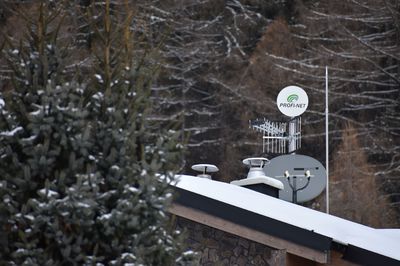Svetový deň telekomunikácií a informačnej spoločnosti nám pripomína, ako sa svet vďaka telekomunikáciám zmenil

Od roku 1965 si svet každoročne 17. mája pripomína Svetový deň telekomunikácií, resp. od roku 2007 Svetový deň telekomunikácií a informačnej spoločnosti. V tento deň bola v roku 1865 v Paríži podpísaná Medzinárodná telegrafická konvencia a založená Medzinárodná telegrafná únia, ktorá sa v roku 1934 premenovala na Medzinárodnú telekomunikačnú úniu (ITU). Pri tejto príležitosti dáva Telekomunikačná únia Slovenskej republiky do pozornosti, ako sa svet okolo nás aj vďaka telekomunikáciám zmenil. Viete, že verejná telegrafná služba sa na našom území začala používať už v roku 1847 ?
Prvá telegrafná linka na území dnešného Slovenska, ktorá spájala železničné stanice Viedeň a Bratislava začala svoju prevádzku 26. decembra 1847. O tri roky neskôr bola otvorená ďalšia telegrafná linka na úseku Bratislava – Nové Zámky – Szob – Pešť. Nové Zámky sa tak stali sídlom druhej telegrafnej stanice na našom území. Zriaďovanie telegrafných liniek bolo veľmi nákladné, telegraf sa rozširoval len veľmi pomaly. V rokoch 1846 – 1865 vzniklo v Uhorsku 50 poštových telegrafných a 39 železničných telegrafných staníc. Rýchlejšiemu rozširovaniu pomohlo povolenie štátu, že telegraf sa môže využívať aj na súkromné účely. V roku 1870 bolo k dispozícii na Slovensku už 64 poštových a 24 železničných telegrafných staníc.
Nové telekomunikačné technológie, na začiatku hlasová služba, neskôr dátové služby a prístup k internetu spôsobili, že verejnosť na Slovensku využívala verejnú telegrafnú službu stále menej. Napokon telekomunikačný regulátor rozhodol, že národný poskytovateľ je povinný poskytovať verejnú telegrafnú službu len do 31. decembra 2006. V januári 2007 po ukončení poskytovania verejnej telegrafnej služby na Slovensku bola odpojená posledná telegrafná ústredňa. Telegrafnú prevádzku prestali využívať aj v leteckej a lodnej doprave a osoby zabezpečujúce komunikáciu už nemuseli absolvovať skúšku z telegrafie. Naopak rádioamatéri telegrafiu aj naďalej používajú, aj keď jej znalosť nie je podmienkou na získanie rádioamatérskeho povolenia.
V súčasnosti je zmyslom Svetového deň telekomunikácií a informačnej spoločnosti upriamenie verejnej pozornosti na používanie internetu, informačných a telekomunikačných technológií. Viete, že monopol národného telekomu na poskytovanie prístupu do internetu skončil v roku 1992? Spočiatku bol najrozšírenejším spôsobom pripojenia dial-up. Počítač bol pripojený k pevnej telekomunikačnej sietí cez modem, ktorý „vytočil“ prístupové číslo internetového poskytovateľa, najčastejšie v tvare 019xy. Takéto pripojenie bolo veľmi pomalé a zároveň veľmi drahé. Bolo spoplatnené podľa času, ktorý ste boli pripojení k internetu a ak ste si nedali pozor, mohli ste presurfovať na internete aj celú mesačnú výplatu. Na konci roku 2002 bola podľa štatistík Výskumného ústavu spojov hustota domácností pripojených na internet len 3,81%
O rozšírenie rýchleho a cenovo dostupného prístupu k internetu sa vo veľkej miere zaslúžili alternatívni, lokálni a regionálni telekomunikační operátori, ktorých veľká časť je v súčasnosti súčasťou Telekomunikačnej únie Slovenskej republiky. Títo operátori začali budovať rádiové a neskôr aj pevné prístupové siete, prostredníctvom ktorých zabezpečili rýchlejší prístup k internetu za dostupnú cenu. Spoplatnenie prístupu sa už neodvíjalo od času stráveného na internete, ale od objemu prenesených dát a neskôr bol účtovaný len paušálny mesačný poplatok za službu. Telekomunikačné služby sa tak stali dostupnejšie a sú prístupné pre každého.